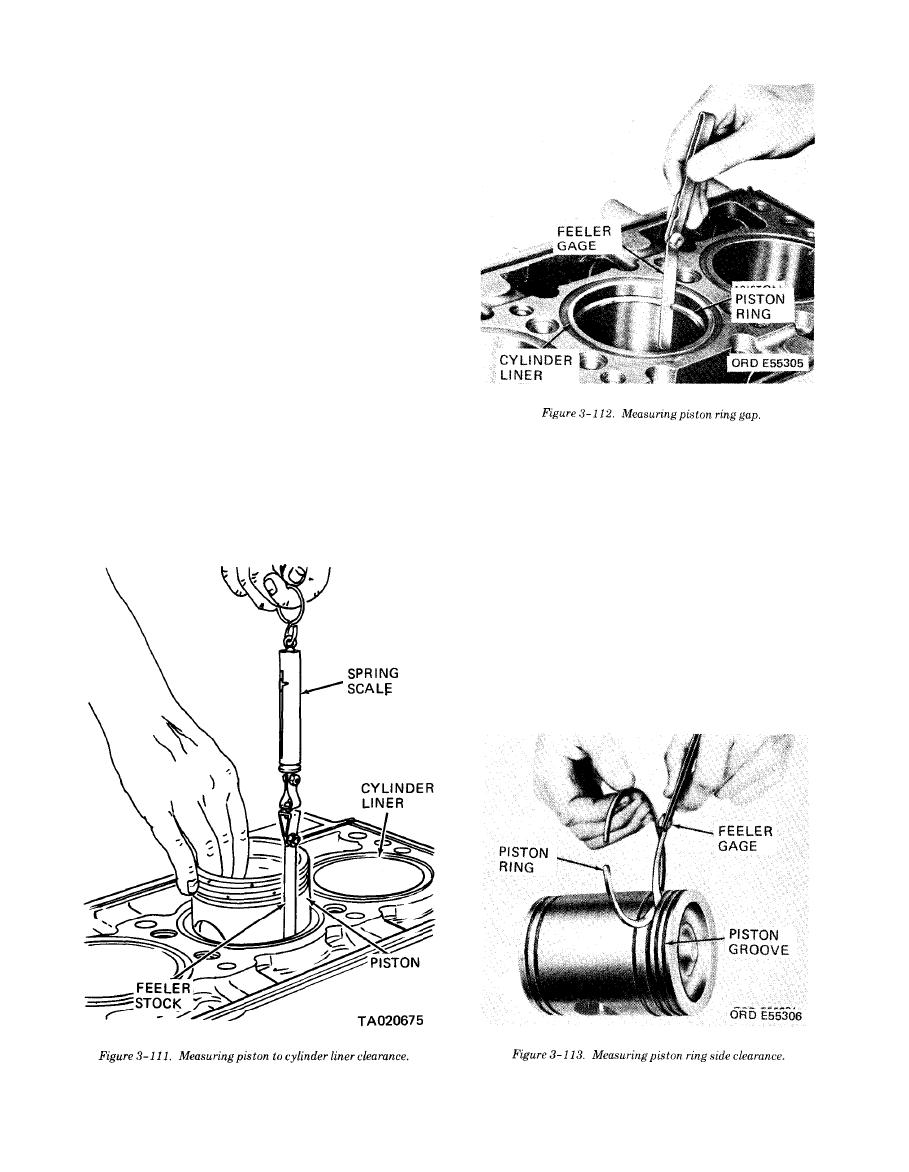 |
|||
|
|
|||
|
|
|||
| ||||||||||
|
|
 TM 10-3930-634-34
(6) Support the inner face of the engine upper
front cover on wood blocks at least one inch thick to
protect the dowel pins in the cover.
(7) Drive the oil seals out of the cover.
(8) To permit cleaning out any foreign material
that may be lodged at the ends of the oil passage, re-
move the end plugs from the camshaft as follows:
(a) Clamp the camshaft in a vise equipped with
soft jaws. Use care to prevent damage to the cam lobes
and machined surfaces of the shaft.
(b) Make an indentation in the center of one of
the end plugs with a 3/8-inch carboloy tip bit.
(c) To aid in breaking through the hardened sur-
face of the plug, punch a hole as deeply as possible
with a center punch.
(d) Use a 1/4-inch carboloy tip bit to drill a hole
through the center of the plug.
(e) Redrill the end plug with a 5/16 inch carboloy
tip bit.
(f) Thread the hole in the plug with a 3/8- 1 6
tap.
d. Cleaning.
(g) Remove the end plug from the camshaft
using a 3/8-16 adapter and slide hammer.
(1) Soak the shafts in cleaning solvent P-D-680.
(h) Insert a 3/8-inch diameter steel rod in the cam-
(2) Run a wire brush through the oil passages to
remove sludge or foreign material.
shaft oil gallery and drive the remaining plug out. If a
(3) Blow oil passages dry with compressed air.
steel rod is not available perform (a) through (g) above
(4) Clean remaining parts with cleaning solvent
to remove the remaining plug.
P-D-680 and dry thoroughly.
(5) Clean all gasket material from front cover and
engine block.
e. Inspection and Repair.
(1) Inspect the cams and journals for wear or
scoring. Replace as necessary.
(2) Check the runout at the intermediate bearings
w i t h the camshaft mounted on the end bearing
surfaces. Runout must not exceed 0.002 inch.
|
|
Privacy Statement - Press Release - Copyright Information. - Contact Us |